 |


|
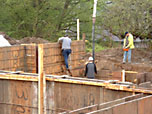
|
Concrete pouring
into forms

|
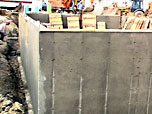
|
when concrete
pouring is complete,
it takes about 60
days for concrete to
reach its maximum

|
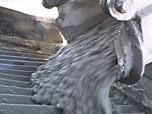
|
concrete truck
pouring concrete
into a concrete
pumper

|
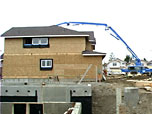
|
Pouring concrete
into concrete
foundations

|
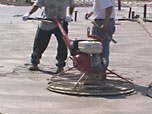
|
finishing concrete
after concrete
pouring is complete

|

|
the home ultimate
protection once
concrete pouring is
complete

|

|
Click here for
testimonials on
protection products
for poured concrete
foundations

|

|
Contact us about
protection once
your concrete
pouring is complete

|
|

 |
 |
 |
 |
 |
 |
 |
 |
 |
 |
 |
 |

| Page
1 Page
2 Page
3 Page
4 Page
5 |
 Click
to go to page 1 Click
to go to page 1
to read about Concrete Foundation
Click to go to page 2
Read about Poured Concrete Foundations
Click to go to page 3
for information on Concrete Pouring
Click to go to page 4
Read about Concrete Pumping
Click to go to page 5
Read about Concrete Finishing |
Concrete Pouring |
 |
|
Concrete pouring can be done one of 2 ways, directly from a ready mix concrete truck or from a concrete pumping truck. In situations such as home foundations, high-rise building, large slabs or when a high degree of control is needed, you would use a concrete pumping truck instead of a ready mix concrete truck.
|
The Mix For Concrete Pouring
 |
When pouring concrete, controlling the flow of concrete from the truck is key. The standard hose size for pouring concrete is 4-inches. Foam forms (ICF's), used during concrete pumping, are less tolerant to the concrete pumping pressures than wood or aluminum forms. When pouring concrete into an ICF, a 2-inch hose should be used. Some ICF manufacturers recommend the use of immersion vibrators while others prohibit them because they can cause blowouts.
Blowouts in ICF's are uncommon but here are some tips for concrete pouring that will help reduce the risk: |
- using a 2-inch concrete pumping hose for placement during concrete pumping
- use a 2-inch concrete pumping hose which will allow the line pump to continue pumping the concrete at full speed without the danger of a form blow-out
- during concrete pumping, a smaller hose gives the operator greater control of placement when pumping concrete
- concrete pouring tools such as 90-degree elbow fittings at the end of
the concrete pumping hose, will break the long fall from the concrete pumping truck down to the nozzle
|
 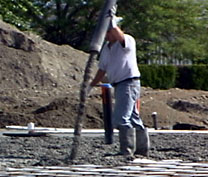

|
|
| Pouring a Concrete Slab |
 |
When pouring a concrete slab it's important to protect against moisture seepage from below your home. If you leave your home unprotected when pouring a concrete slab, you leave your home prone to moisture seepage as well as mold and mildew, lowered indoor air quality, damaged flooring and a host of other problems. The best way to protect your home when pouring a concrete slab is to install
 drainage membrane plus under your concrete slab. drainage membrane plus under your concrete slab.  drainage membrane plus protects your home against moisture seepage and can help protect against radon gas. In addition, it bridges gaps, cracks, voids and allows your home to shift and settle all without affecting its performance. drainage membrane plus protects your home against moisture seepage and can help protect against radon gas. In addition, it bridges gaps, cracks, voids and allows your home to shift and settle all without affecting its performance.
|



for more information on
a concrete foundation
click next
|
|
|
|
 |
 |
 |
 |
 |
 |
 |
 |
 |
 |
 |
 |

|
|
 |
 |



